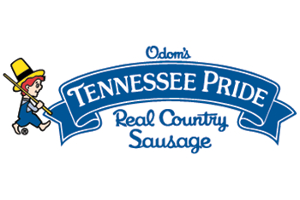Hot Developments (excerpt) By Sam Gazdziak, Senior Editor, the National Provisioner
(....)
Infrared innovations
About two years ago, Odom’s [Note: now Conagra] brought an infrared oven to its Dickson plant, which was the first infrared oven in the country at the time, Stonehocker notes. One of the advantages he notes is considerable energy savings with the oven over more conventional cookers. Ordinarily, he explains, someone has to come in early and start an oven or a fryer in order to get the oven cabinet or the fryer oil up to the proper temperature. The infrared oven has sensors that detect when product is about to advance into the cooker, and it will turn on. It will also shut off automatically if no new product comes on the conveyor. “That is a huge opportunity for energy savings. You’re not consuming energy when you’re not cooking,” he says.
There is also little to no heat escaping from the oven, which Stonehocker says not only adds to the energy savings but also makes work easier for the people who operate or work around the oven.
“It’s [normally] very hot in the close vicinity of these cookers. You’re making your employees work in an extremely hot environment, or you’re attempting to cool that area down.”
Instead of creating an uncomfortable working environment or requiring the use of extra fans or air conditioners, the infrared oven can operate without affecting the temperature of the area around it. Stonehocker says that one of the problems with ovens in the past has been getting uniform heat from one side of the cooking surface to the other.
“Using the infrared oven, it has light emitters above [the cooking surface], and uniform heat is almost a non-issue. You have uniform heat from side to side, so that problem has been eliminated,” he says.
Needed features
As with any piece of equipment, productivity is one of the key features of any oven or fryer. In the case of his infrared oven, Stonehocker says that the yield can meet or exceed the company’s oil cooker.
“The advantage this has is that with a fryer, you have hot oil. From a safety perspective, we have no cooking oil,” he says, adding that the lard that renders out in the oven falls through the belt and into a pan of water located below the belt. That lard is then skimmed off and can be sold to a rendering company.
Odom’s Tennessee Pride produces a number of sausage products. The products that are cooked on the infrared oven are formed sausage patties that are added onto a variety of breakfast sandwiches. Stonehocker points out the importance of performance in his cooking equipment.
“A half-percent or a percent difference in yield over the course of a year is significant, so it must perform and deliver that yield.”
Operator comfort is also a key issue.
“If I had to do that job eight or 10 hours a day, five or six days a week, how would I like operating it,” he says.
Stonehocker says that more equipment designers should put themselves in the role of machine operators and design ovens, fryers and other machinery to reduce the stress of the working environment.
(...)











